HIT CHANNEL EXCLUSIVE INTERVIEW: February 2016. We had the great honour to talk with a legendary photographer: Kevin Cummins. He has photographed Joy Division, David Bowie, Marc Bolan, The Sex Pistols, Bob Marley, Morrissey, Bjork, Joe Strummer, Manic Street Preachers, The Stone Roses, Oasis, New Order, Thom Yorke and many others. His latest book is “New Order” (2015), a definitive collection of photographs of the influential band New Order. Read below the very interesting things he told us:
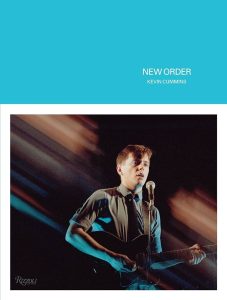 Was it difficult to choose the material for your latest book “New Order”?
Was it difficult to choose the material for your latest book “New Order”?
Not really. I think when you are doing a book you are using all the available archives. Everything is chronological, in a way. So, it’s quite easy to choose about 6 pictures from each session and then to write about those events. So, it wasn’t that difficult. It was more difficult when I did the Manchester book (ed: “MANCHESTER: Looking for the Light Through the Pouring Rain”-2009) because there were so many pictures. It took me a long time to work out exactly what story was I want to say. But with the New Order one, it kind of says its own story. I was just putting the best pictures in it.
What are the current projects you are involved in?
I hate talking about myself. An exhibition is coming up in Sydney at the Opera House in Australia in June, which is part of a festival there. I am going to do a large Sex Pistols print with a gallery among the events about the 40th anniversary of punk.
You also did a Bowie cover for Spex magazine in Germany. It was a great cover!
Yeah, yeah. Thank you. With a picture like that, which is so black, it’s sometimes quite hard to get people to understand how strong an image it will be. People tend to want very safe pictures. Something where they recognize a person really obvious like that. Yes, we did that and it worked really well and of course I’m very pleased with that.
How important is to like an artist when you work with him/her?
I think it’s very important, really. I think if you respect a person’s work it makes things easier and similarly if they respect your work.
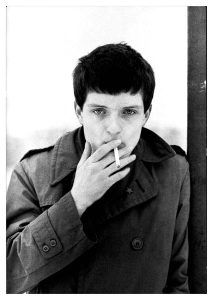 Can you explain to us your phrase: “I saved Joy Division from being Bon Jovi”?
Can you explain to us your phrase: “I saved Joy Division from being Bon Jovi”?
(Laughs) Yeah. I think they might want to be a rock band and when (ed: producer) Martin Hannett got hold of them, they didn’t really like the songs, his production work on “Unknown Pleasures” (1979). They wanted a much rockier sound. I think with Martin doing that and the way I photographed them, which was very un-rock ’n’ roll, I think we saved them from being Bon Jovi.
Did you expect then that your photos of Joy Division would become so important in music history?
I didn’t really know because I didn’t know how successful Joy Division would become. When you work with somebody and when you are a part of a particular scene at the time, it’s very difficult to see beyond that. We thought Joy Division were immensely important in Manchester, but 15-20 miles outside Manchester they wouldn’t have much of a crowd. So, it was difficult. We didn’t know how big they were going to become and obviously with Ian’s passing, it gave them a kind of appeal like that.
Was Ian Curtis (Joy Division singer) an easy-going person to work with?
It’s difficult to say now, really, because it was so long time ago. He was a young boy and we were all quite young then and we were all doing the same kind of things. We didn’t have a lot of experience of life, which is so tragic really that somebody so young would take that life.
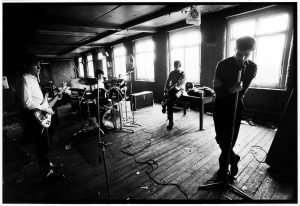 You worked with David Bowie on several occasions. What do you remember the most of him?
You worked with David Bowie on several occasions. What do you remember the most of him?
I mean the first time I photographed Bowie for an NME cover was during the “Tin Machine” (1989) period. Because I grew up with Bowie as a teenager -he was my teenage idol, I had pictures of him on my wall- I found it very difficult to photograph him the first time I met him, because I was quite nervous. Once I got over that, it took me quite a time to see that it was quite easy. And I was always seeing him as very engaging. He had a very good sense of humour. He was quite easy to work because he had such a beautiful charm.
Were you shocked by the news of David Bowie’s passing on 11 January?
Oh, obviously. I think everybody was. It was a real shock because on Friday he released the album (ed: “Blackstar”) which was, you know, a fantastic record and we all were talking about it and saying: “it’s great record” and then on Monday morning he was dead. It was a massive shock.
How difficult was for you as a professional to work around the chaos that the Sex Pistols created in their concerts?
I saw it as something quite easy because in those days it hadn’t become crowd’s medium, they were just a bunch of moshing kids of sorts. Even their crowd might jump rows and then mix, it was nothing like it’s now if you go and see in a punk live or even the Foo Fighters. Crowds behaved in a very different mind. The Pistols attracted probably a slightly more difficult audience. A more confrontational audience, certainly in America, when people just wanted to prove that they were something more wicked than the English kids. In England, it wasn’t really like that.
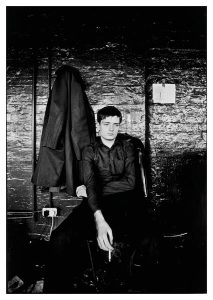 Can you tell us about the seven page contract that Rammstein sent you?
Can you tell us about the seven page contract that Rammstein sent you?
The band or the band’s management issued a contract where I think they didn’t respect me and didn’t trust me. They wanted me to sign away my own rights in return for me standing there and photographing them, which is ridiculous. I don’t ask them to give me the royalties from their songs. When I take photographs I am creating something which is helping their career. It’s my art and I create it. I own it. If they want to own it, they pay me to photograph them. I was commissioned by the Times to photograph them and when they gave this particular contract, fortunately the newspaper backed me, rather than the band. So, they refused to cooperate with that contract.
What’s your opinion about Tony Wilson (co-founder of Factory Records, radio and television presenter)? Was he a visionary?
I think Tony was very good. He was partly responsible for everything that happened in Manchester. Tony wasn’t a creative person. Tony was good at putting the right people into a room and say: “I think you two can work well together”. He was good at that. He was good at making sure that things could happen. I don’t think Tony ever said that he was a creative genius. The others think Tony was the guy who made things happen. I don’t think much of that would have happened without people around the bands to help making work. It’s alright being in a great band in a great city, but if there wasn’t a support network to get them in the press and help them get a record contract and various things like that, then nobody would know their existence.
You took some photos of Marc Bolan (T. Rex) in rehearsals for the Marc Show one month before his death in 1977. What was he like?
It was one of the first things I was commissioned to do for the NME. We spent about three days with Marc Bolan, as you said, a month before he died. He was really charming, beautiful and exhausting company, actually. He introduced us to a lot of people. I enjoyed his company immensely. He was really great. Again, I was very-very shocked when he died. Obviously, as it was a car crash it was different to being self-destructive. It was such a shame because his career was in the upper side. He was very enthusiastic about his work, about working on the TV series of “Marc Show”. Again, it’s an awful tragedy when something like that happens.
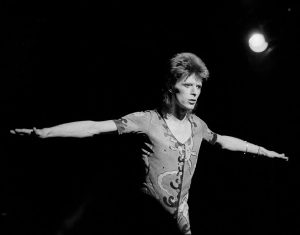 Are you frustrated with the collapse of the music press?
Are you frustrated with the collapse of the music press?
I find it quite sad. Because people don’t buy magazines or a weekly newspaper, it has to offer alternatives of what you can get online. I think people used to buy the NME to read about the record reviews, which you can get instantly online now. So, what they need to do is to offer something that people would buy to read that would be more informative. I don’t think they really understood that enough, yet.
What was it like to live in Thatcher-era Britain? Some friends of yours in America thought the photos of Joy Division were taken in Poland.
Yeah, they did actually. They were bleak, grey, pokey, snowy and quite gloom. So British winter shot. They were quite brutal and I think the architecture was quite brutal as well. People thought the Joy Division picture on the bridge for instance, was taken in Poznan or somewhere else than Manchester.
Have you ever turned down an interesting work offer because you were busy or for any other reason?
I sometimes turn down offers when there is an urgent Manchester City match (ed: Kevin is a passionate supporter of Man City). I think you work so you can enjoy the joy of life. So, I sometimes have to turn down an offer when I go to see an important match.
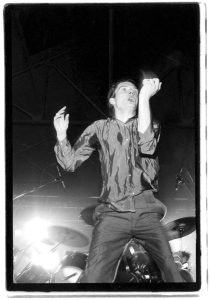 Would you like to do a photo session with Pep Guardiola, the next manager of Manchester City?
Would you like to do a photo session with Pep Guardiola, the next manager of Manchester City?
Oh, definitely, yeah!
I think it will happen.
I could probably engineer it. I will probably be able to do it when he arrives in Manchester City.
Do you have any professional ambition left?
I think I will just keep working. I think some musicians helped to build the mythology of rock ’n’ roll and I think I am keen to carry on doing that. In person, I would like to photograph Jack White. I really like to work with Jack White because I really like his work.
You have worked with many people from Bowie to Joe Strummer and the Sex Pistols. Who was the most talented person you’ve seen in your life?
I went to see David Bowie when I was in my teens. I had never seen anything like that on stage and I had seen various things like that, which were all very flashy and very showy. Now, it may seem normal but at the time nobody really had that kind of theatricality in rock ‘n’ rock and I would say Bowie, really. But I think now when you look at Bowie and “Ziggy Stardust Tour” on film, many people find it rudimentary. You have fabulous light shows now in most gigs. I think most people in music have an ego so much, because you don’t stop on stage when there are 10.000 people that you just enjoyed. I think most people would enjoy working with that one man. I think Bowie, because Bowie was the reason I went to do the kind of work I did.
All photos courtesy of Kevin Cummins
A huge “THANK YOU” to Mr Kevin Cummins for his time.
Official Kevin Cummins website: http://www.kevincummins.co.uk
Official Kevin Cummins Twitter page: https://twitter.com/KCMANC
Official Kevin Cummins Facebook page: https://www.facebook.com/kevin.cummins.94

